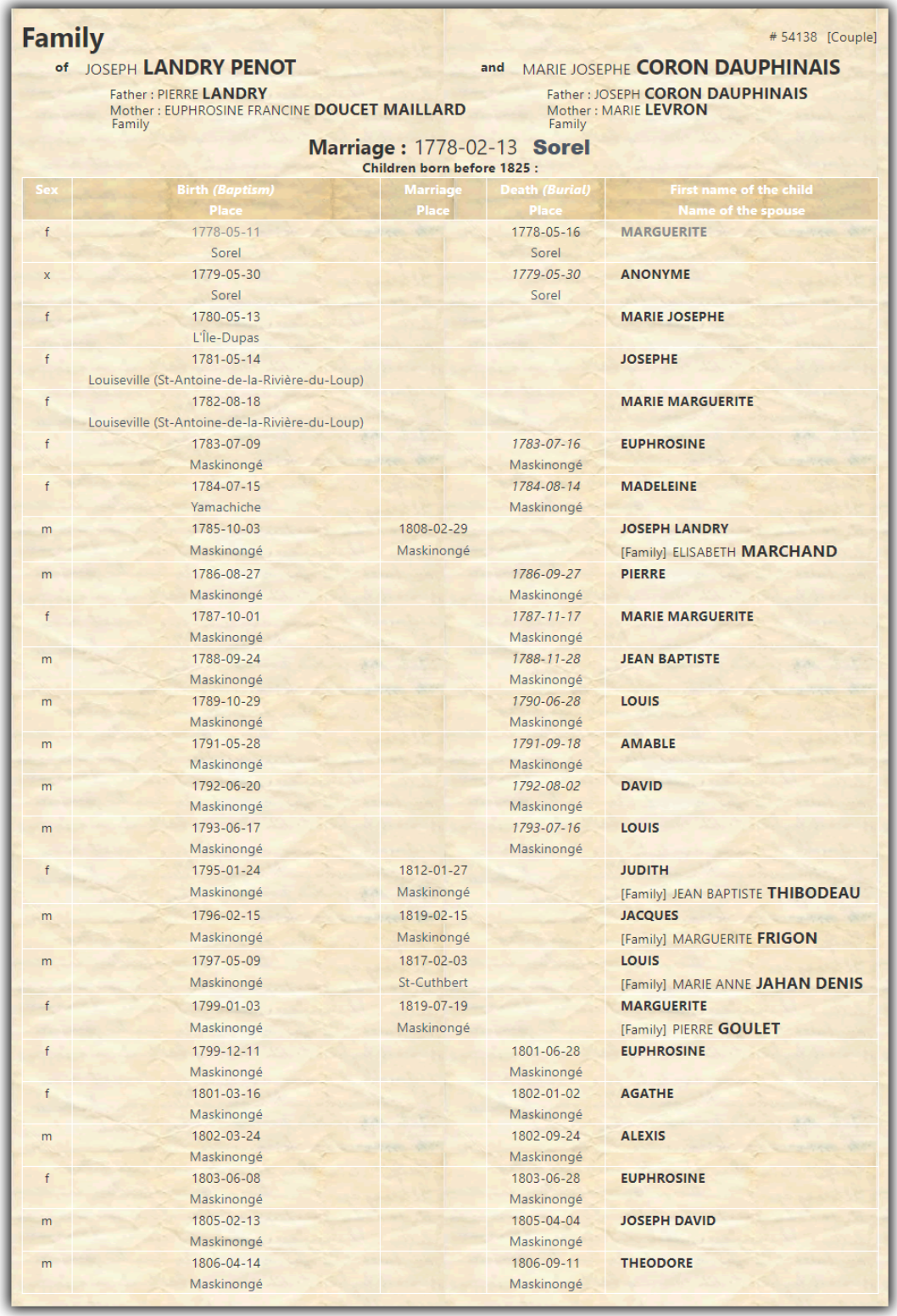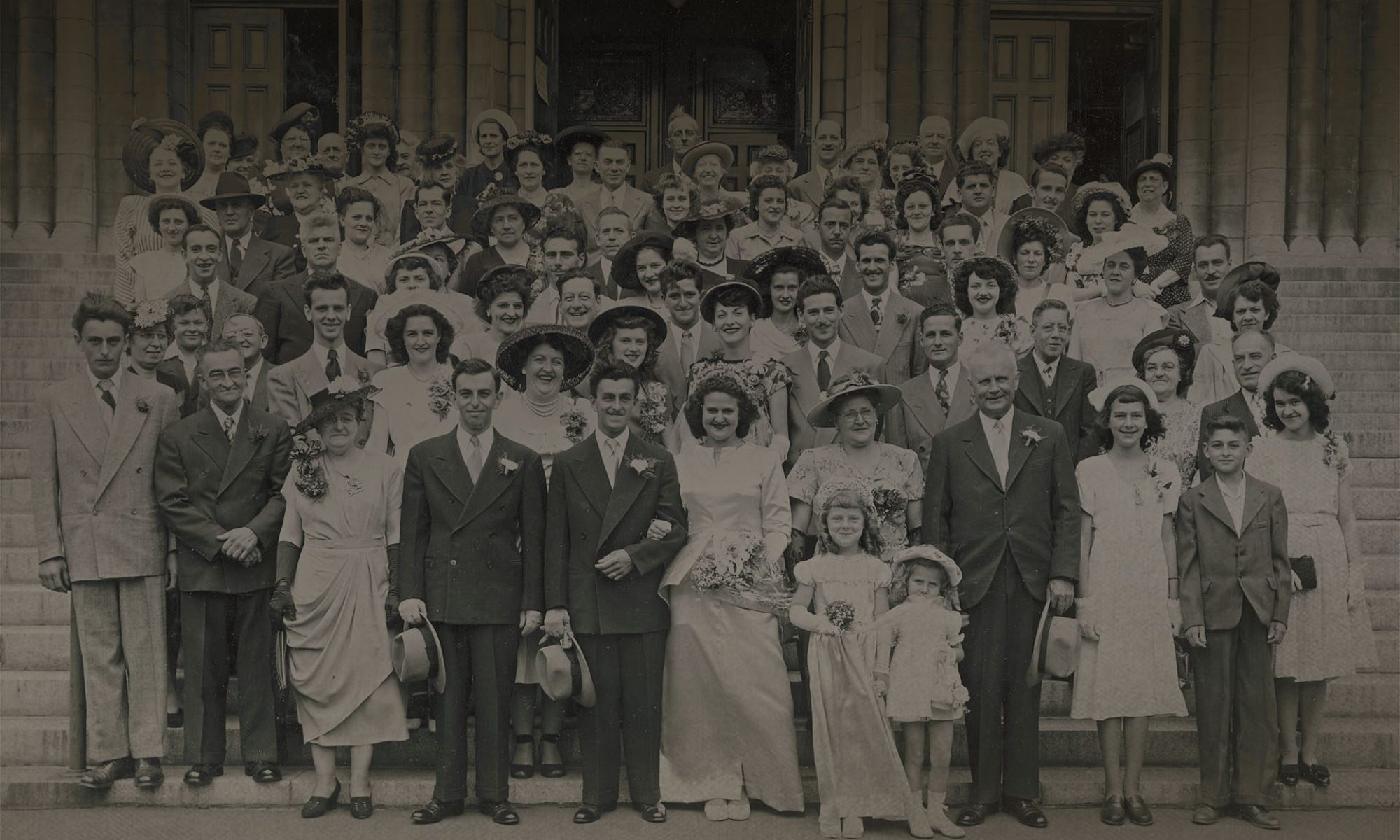This post is also available in: Français

Throughout History, idealizing the past has been a common theme. The life of our ancestors is often perceived as having been harsh, but also bucolic and charming, a more “natural” way of living.
But one must know that the French Canadian population of two centuries ago lived under a demographic profile characterized by high fertility as well as high mortality. In the absence of contraception, a couple’s fertility was expressed fully. Let’s look at the case of Joseph Landry and Josephe Coron Dauphinais, married on the 13th of February 1778 in Sorel.

Born in March 1761, Josephe Coron was 16 years old on the day of her marriage; she was already pregnant, as she gave birth in May 1778. Twenty four more births followed, the last one in April 1805, 27 years after the first. Josephe had just celebrated her 44th anniversary. This remarkable woman died in 1842 at the age of 81.
Twenty five children in 27 years, with only five making it to adulthood; the twenty others dying before the age of two. Who would exchange today’s living conditions for the ones provided by Nature?
You can learn more about your ancestor’s fertility with a subscription to the PRDH, where you will find all of the Catholic individuals who lived in Quebec between 1621 and 1849. These individuals are listed through their baptism, marriage and burial records, which are linked through individual and family files. These files, such as the one used in this article, give you a detailed overview of the fertility and living conditions of your ancestors.
More information about the PRDH
More information about the PRDH subscription options
Bertrand and François Desjardins
September 2017


